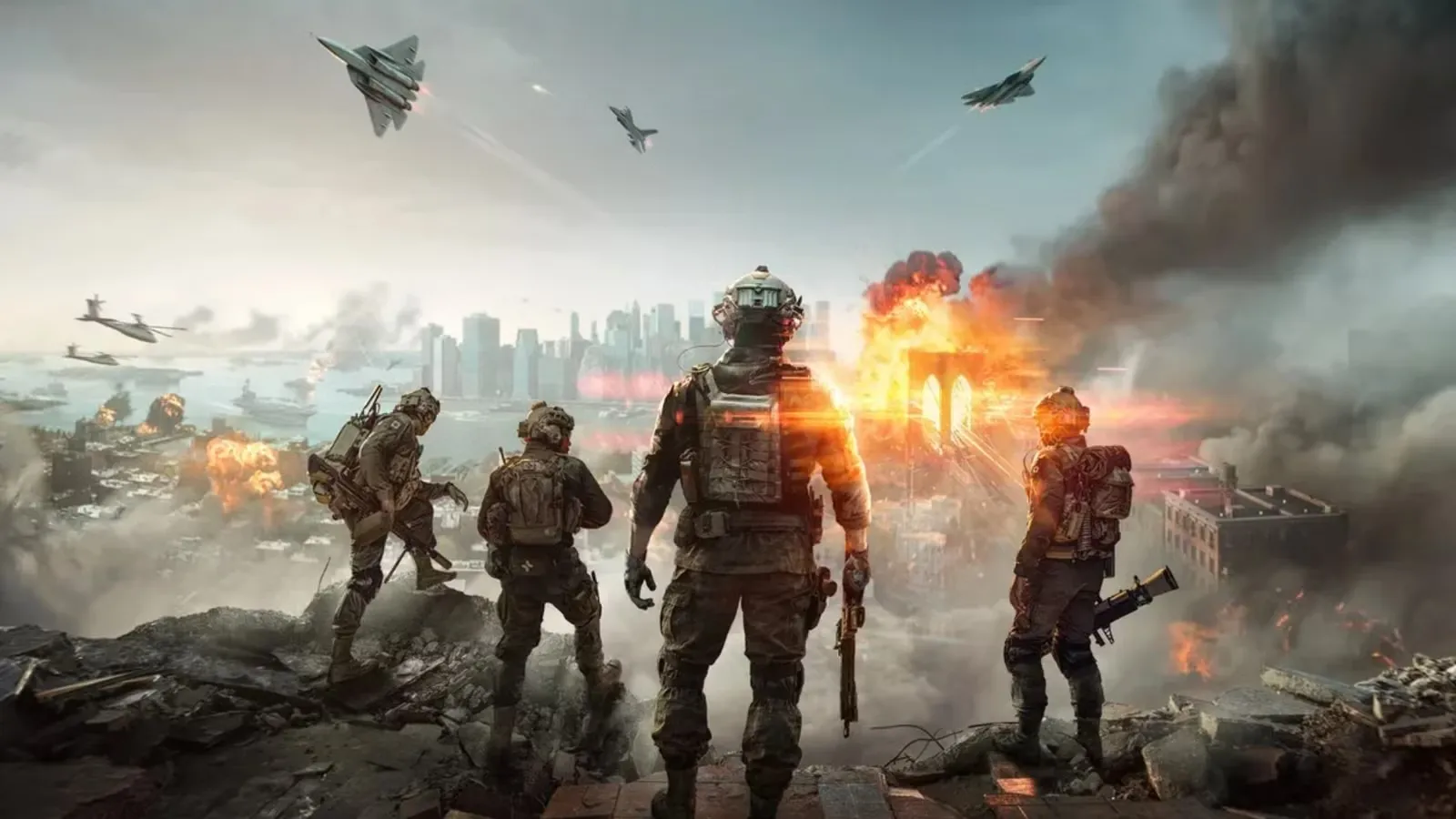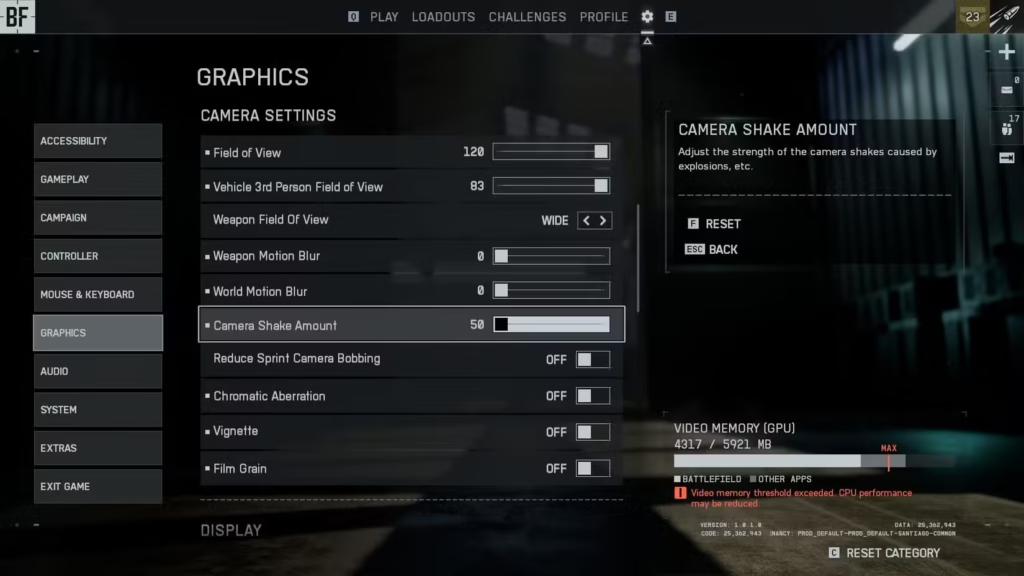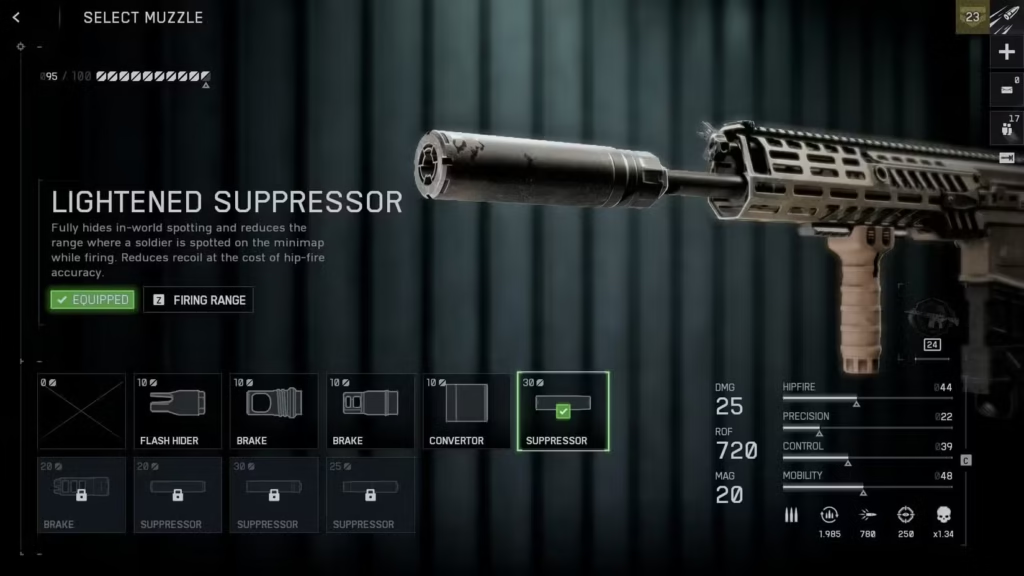
Newsletter Subscribe
Enter your email address below and subscribe to our newsletter

Enter your email address below and subscribe to our newsletter
Your Source for Game News and Guides

Master recoil control in Battlefield 6 with our complete guide. Learn the best settings, attachments, and techniques to laser-beam enemies
Let’s talk about the elephant in the room—Battlefield 6 has some serious recoil. DICE clearly decided that weapons should feel like actual firearms instead of laser pointers, which is great for immersion but rough on your accuracy. The good news? There are tons of ways to tame that kick and turn your wildly bucking weapon into a precision instrument.
I’ve spent way too many hours testing every setting, attachment, and technique to minimize recoil in BF6, and I’m breaking down everything that actually works. We’re covering visual recoil tricks that make shooting feel smoother, attachment combinations that dramatically reduce weapon kick, and deployment mechanics that most players don’t even know exist.
Before we dive into solutions, you need to understand what you’re fighting against. BF6 has two distinct recoil systems working simultaneously:
Visual Recoil – This is the camera shake and screen movement when you fire. It doesn’t affect where your bullets go, but it makes tracking enemies significantly harder because your view is bouncing around like a paint mixer.
Actual Recoil – This is the physical weapon kick that makes your shots climb vertically and drift horizontally. This directly impacts bullet placement and is what attachments primarily address.
Most players only focus on reducing actual recoil through attachments, but honestly? Controlling visual recoil through settings can be just as impactful for your accuracy. Let me show you how.
Here’s something most guides won’t tell you—you can dramatically improve your shooting experience without touching a single attachment. These settings adjustments make weapons feel more controllable, which translates to better accuracy in actual combat.

Navigate to your Graphics settings menu and make these critical adjustments:
Field of View (FOV): Set to 105-110
This is the single biggest visual recoil reducer in the game. Higher FOV zooms your camera out, making the recoil movement at your crosshair appear less dramatic. Think of it like watching someone shake a phone from across the room versus holding it in your hand—same movement, completely different perception.
Here’s the sweet spot: 105-110 FOV gives you the recoil reduction benefits without making enemies appear too small at range. Going beyond 110 starts affecting your ability to spot targets at medium distances.
Camera Shake Amount: 50%
Default camera shake is obnoxious. Cutting it in half makes explosions, nearby impacts, and your own gunfire far less disorienting. You maintain situational awareness instead of feeling like your character has a concussion every time something happens nearby.
Weapon Motion Blur: 0% World Motion Blur: 0%
Motion blur might look cinematic in trailers, but in competitive gameplay it’s visual poison. When you’re tracking a strafing enemy, motion blur smears your view and makes precise aim impossible. Turn both of these completely off.
These settings won’t change your weapon’s actual stats, but they’ll make controlling recoil exponentially easier because you can actually see what you’re shooting at. If you want more optimization tips, check out our complete settings and optimization guide.
Here’s something interesting—visual recoil becomes more noticeable with higher magnification optics. A 1x red dot sight will have minimal visual shake, while a 6x scope will look like you’re operating a jackhammer.
This is why aggressive players prefer lower magnification sights even at medium range—the visual recoil reduction is worth more than the zoom for tracking moving targets. If you’re running magnified optics, the visual recoil settings above become even more critical.

Now let’s talk about reducing actual weapon kick through attachments. The attachment system in BF6 is surprisingly deep, and understanding which combinations work best can transform an unruly weapon into a laser beam.
Muzzle attachments are arguably the most impactful recoil-reduction category. Here are your best options ranked by effectiveness:
Top-Tier Muzzle Attachments:
The Trade-Off You Need to Know:
Muzzle brakes make you incredibly visible. When you fire:
My honest take? Use brakes for weapons you’re struggling to control until you master the recoil pattern, then switch to the Lightened Suppressor. The stealth benefits outweigh the slightly higher recoil once you’ve developed the muscle memory.
For loadout inspiration using suppressors effectively, check out our M277 carbine builds and M4A1 configurations.
Foregrips work in tandem with your muzzle device to create seriously controllable weapons. Here are the heavy hitters:
Best Foregrips for Recoil Reduction:
The Hidden Cost:
Foregrips that dramatically reduce recoil typically decrease your ADS accuracy (the “first shot spread” statistic). This means your initial bullet has slightly more random deviation from your crosshair placement.
Practical impact: For most engagements, this trade-off is worth it. Landing 8 out of 10 follow-up shots beats missing 7 out of 10 because of uncontrollable recoil. The accuracy penalty matters most for tap-firing at extreme ranges.
Here’s how to pair muzzle devices and foregrips for maximum effectiveness:
For Maximum Recoil Control (Learning Phase):
For Competitive Stealth Play (Advanced):
For Horizontal Recoil Problems:
Here’s a mechanic that probably 60% of players don’t even know exists—weapon mounting provides massive recoil reduction. We’re talking near-zero kick for sustained fire. It’s almost cheating when used correctly.
For Keyboard & Mouse:
For Controller Players:
Bipods (LMGs and some DMRs):
Grip Pods (Rifles like M4A1, M277):
Pro tip: You can mount weapons even without a bipod/grip pod attachment, but you get almost no recoil benefit. The attachment itself is what provides the actual reduction.
Knowing where to mount is as important as knowing how:
Top-tier mounting spots:
When to use mounting:
When NOT to mount:
For class-specific mounting strategies, check out our Support class loadouts guide which covers LMG deployment in depth.
Attachments and settings get you 70% of the way there, but these techniques push you into the top tier of players:
The golden rule: Full-auto is for emergencies only (unless you’re within 10 meters of an enemy).
Your accuracy will literally double overnight if you commit to burst firing. Yes, even if the enemy is standing still. Even if you think you can control the full spray. Burst fire wins.
Here’s an esports technique that works in BF6: release your movement keys the instant before you fire. Even a fraction of a second of standing still dramatically improves first-shot accuracy.
The sequence:
It feels unnatural at first, but this technique is the difference between “pretty good” and “scary accurate” players.
This reduces the amount of recoil compensation you need to do in the first place:
These fundamentals matter more than any attachment combination.
For long-range engagements, use the range finder gadget to know your exact distance. This helps you:
Not all weapons respond equally to recoil reduction techniques. Here’s a quick breakdown:
Assault Rifles:
Carbines:
LMGs:
SMGs:
For specific weapon builds optimized for minimal recoil, explore our complete weapons list and guide.
Let me be honest—you’re never getting true zero recoil in Battlefield 6. DICE intentionally designed weapons to have realistic kick because it raises the skill ceiling and prevents people from laser-beaming across the map with assault rifles.
What you can achieve is:
The goal isn’t eliminating recoil—it’s making it manageable enough that your aim skill determines gunfight outcomes, not RNG weapon kick.
Theory is useless without practice. Here’s how to develop actual recoil control:
Test Range Drills:
In-Game Practice:
Campaign Mode Training:
While you’re improving your fundamentals, might as well knock out some challenges and earn Pro Tokens along the way.
I see these errors constantly, even from experienced players:
Over-gripping your mouse/controller – Tension creates micro-movements that amplify recoil. Stay relaxed.
Fighting recoil instead of riding it – Pull down smoothly, don’t jerk your aim around trying to correct.
Using the wrong attachments for your playstyle – If you’re aggressive, don’t stack maximum recoil reduction attachments that kill your mobility and ADS speed.
Ignoring visual recoil settings – Seriously, adjust your FOV and disable motion blur. It’s free accuracy.
Never mounting weapons – Even aggressive players should mount during natural pauses in combat. It’s an insane advantage.
Spraying at inappropriate ranges – Just because you can hold the trigger doesn’t mean you should.
Here’s your step-by-step implementation guide:
Week 1: Settings Optimization
Week 2: Attachment Experimentation
Week 3: Technique Integration
Week 4: Refinement
For overall gameplay improvement, don’t forget to check our best tips and tricks guide and XP farming strategies to level up weapons faster.
The learning curve for recoil control in Battlefield 6 is steeper than previous entries, and that’s intentional. DICE wanted gunplay where skill expression matters, where a player with great recoil control consistently outperforms someone spraying and praying.
Embrace the challenge. The satisfaction of landing a clean 10-round burst at 60 meters and dropping an enemy who never even hit you? That’s what makes BF6’s gunplay so rewarding.
Start with the settings adjustments (they’re instant improvements), add appropriate attachments, then gradually develop the muscle memory through consistent practice. Within a few weeks, you’ll wonder how you ever played without proper recoil management.
Get Battlefield 6:
Now get into the practice range, dial in those settings, and transform yourself into a recoil-controlling machine. Your K/D will thank you.